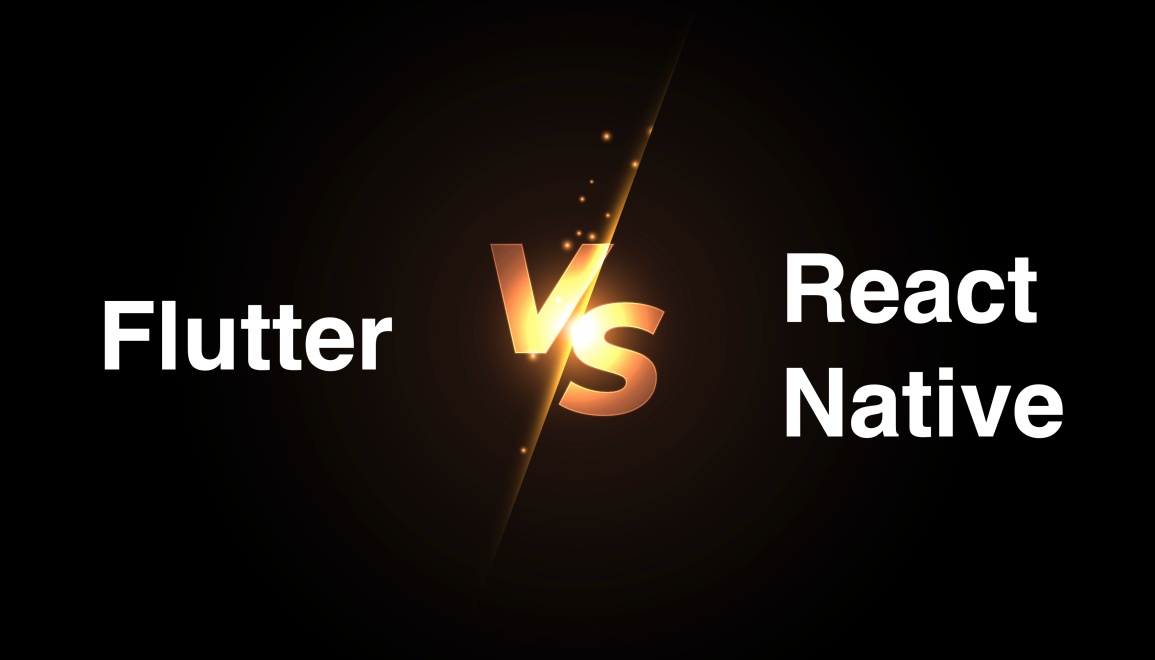Native development or cross-platform? Native applications provide the best possible performance and user experience. Thing is, creating separate codebases can be very expensive and time-consuming. So what do you do? Cross-platform frameworks that can deliver high-quality apps with a single codebase, like Flutter and React Native, come into play here. But it might be difficult to select the best framework when there are two formidable competitors such as these. Let’s go into the specifics of Flutter and React Native so you can decide with confidence.
What are Flutter and React Native?
Flutter and React Native are cross-platform programming language frameworks. They let you create mobile applications for iOS and Android from the same codebase. This results in considerable reductions in both development timed and expense.
But to choose the winner in the Flutter vs React Native conundrum, you have to know every in-and-out. They pursue this objective in various ways, though.
- Flutter: Google’s Flutter stands out because of its extensive UI toolkit. It achieves near-native speed by using the Dart programming language. Dart compiles programs into native ARM or x86 machine code. With its extensive collection of widgets, Flutter can be used to create any type of mobile user interface. Additionally, its quick reload functionality speeds up development by enabling nearly immediate previews of code changes.
- React Native: React Native, supported by Facebook, uses JSX (JavaScript XML) and JavaScript to create the user interface of the program. For rendering, it uses native platform components and a “bridge” to transfer data between JavaScript and native code. With this method, outsourcing companies that are proficient in React and JavaScript can quickly create cross-platform applications.
Pros and Cons of Flutter
To confidently decide who wins in React Native vs Flutter, let’s go over their pros and cons. Starting with Flutter.
Pros
High Performance | Rich UI Toolkit | Hot Reload | Single Codebase |
Compiled code results in low lag and seamless user experiences, which makes Flutter perfect for apps that need to be very responsive or have a lot of visuals. | By offering an extensive selection of modifiable widgets, Flutter lessens the need for other libraries for creating any type of mobile interface. | This feature makes it possible to preview code changes almost instantly, which greatly accelerates the development process. | Save time and money by developing once and deploying to both iOS and Android. |
Cons
Learning Curve | Larger App Size | Limited Third-Party Library Support |
Compared to JavaScript, the developer community for Dart, the language used by Flutter, is smaller and it is comparatively newer. | App sizes may increase with compiled code when compared to React Native. | Compared to React Native, the ecosystem of third-party libraries for Flutter is still developing, despite the considerable core capabilities. |
Do you need help with mobile app development?
Contact Growth Hackers
Pros and Cons of React Native
Now that you might sway to the side of Flutter in the Flutter vs React contest — let’s go over the pros and cons of React Native.
Pros
Large Developer Community | Mature Ecosystem | Smaller App Size |
JavaScript is a language that is widely used, and hiring developers is made easier by React Native, which takes use of the large React developer community. | With its longer history and greater selection of third-party libraries and plugins, React Native provides more pre-built solutions for a greater number of capabilities. | React Native applications are often smaller than Flutter apps, since they make use of native UI components. |
Cons
Performance | Limited UI Customization | Slower Development Cycle |
When compared to native or Flutter apps, depending too much on the bridge for communication, might occasionally result in performance bottlenecks. | React Native provides essential UI components, but in order to generate highly customized UIs, more native programming effort may be needed. | In contrast to Flutter’s rapid reload, changes usually need rebuilding the bridge between native and JavaScript code, which might delay down development. |
In the ongoing debate of what to use for mobile application development, Flutter and React Native stand out as the most popular choices. Both frameworks offer unique advantages and can be more suitable for certain types of projects over others. Understanding the strengths and ideal use cases for each can help developers and companies make an informed decision that best fits their requirements and will align with their app business plan.
When to use a particular framework
Although both frameworks are flexible, some situations are better suited for them due to their advantages.
Choose Flutter if:
1. Performance is a Key Factor: Flutter is well recognized for outperforming React Native in terms of performance. This is mostly because Flutter uses the native code-compiling programming language Dart. Flutter is the preferred option for apps that mostly rely on graphics or animations since it enables quicker app launch times and better animations.
2. High Level of UI Customization: Flutter is your best option if your app needs a distinctive and intricate user interface that sticks out in the crowd. It offers a large selection of widgets and features that make it simple to create unique app designs. In contrast to React Native, which frequently depends on other libraries for unique components, Flutter’s large widget library can easily accommodate highly customized user interface designs.
3. Rapid Development with Hot Reload: The hot reload functionality of Flutter is a big benefit for developers who want to work quickly. The development cycle is significantly accelerated by this functionality, which allows for rapid examination of code changes without requiring a complete app restart. Flutter can be a game-changer for projects where time-to-market is critical due to its rapid and efficient development process.
Choose React Native if:
1. Existing React and JavaScript Expertise: React Native may take use of your development team’s pre-existing expertise in JavaScript and React. Because they can create mobile apps using a known language and framework, developers may greatly lower the learning curve and boost productivity.
2. Concerns Over App Size: Because it makes use of the pre-existing code and libraries of the native platforms, React Native is usually lighter than Flutter. React Native offers a more effective option that may assist in minimizing the app size for companies who are worried about the memory use and download size of their apps.
3. Access to a Wide Range of Pre-built Third-party Libraries: Compared to Flutter, React Native is more established and has a larger ecosystem. This contains an extensive selection of third-party libraries and plugins that offer pre-built functionality and can dramatically save development time. React Native’s ecosystem provides an abundance of readily integrated tools for applications where quick prototyping is needed or custom-built solutions are not necessarily necessary.
The choice between Flutter and React Native is based on the particular requirements of the project, the development team’s current skill set, and the importance of app design and performance. Flutter is superior in terms of performance, customization, and development speed; however, React Native is notable for its ability to use pre-existing web development abilities, optimize app size, and provide access to a wide variety of pre-built solutions such as monitoring application observability. By carefully considering these variables, you may select the framework that is best for your mobile app development project.
Choose between Flutter and React Native and pave the way for your app’s success!
Choosing in Flutter vs React Native for Mobile App Development
There isn’t just one “better” framework in the Flutter vs React Native fight. The best option relies on the particular requirements of your project and the expertise of the team. Here are some important things to think about:
- Project Requirements: Examine your app’s development schedule, UI complexity, and performance requirements.
- Development Team Expertise: Analyze the level of JavaScript, React, or Dart expertise on your team.
- App Size Constraints: React Native could be a better option if app size is a big concern.
- Long-Term Maintainability: Take into account each framework’s growth trajectory and level of maturity. React Native has a more extensive community and a more established history, whereas Flutter is developed by Google, guaranteeing ongoing support.
Making an Informed Decision in Flutter vs React Native
It will be easier for you to decide on Flutter vs React Native if you carefully analyze your project needs, team competence, and the aforementioned factors. Here are a few more pointers.
- Experiment with both frameworks: Try utilizing each framework to create basic prototypes so you can experience the development process and UI features.
- Research the community: Examine online groups, tutorials, and forums devoted to each framework to determine the quality of assistance and resources offered.
Final Words on Choosing between Flutter and React Native for Mobile App Development
The decision between Flutter and React Native depends on how well you grasp each tool’s advantages and how well it fits the demands of your project. For apps that require a lot of visuals, Flutter’s exceptional performance and customizable user interface are unrivaled. React Native excels in quick development and efficient app size because of its robust ecosystem and familiarity to web developers. Achieving an effective, user-friendly, and sustainable solution requires striking a compromise between the unique requirements of your mobile application and the experience of your team. In the end, the choice should make use of the talents within your team and the objectives of the project, resulting in the creation of a unique mobile application.
Growth Hackers is a full-service mobile marketing services agency helping businesses from all over the world grow. There is no fluff with Growth Hackers. We help entrepreneurs and business owners empower their mobile development journey with Flutter or Native React, increase their productivity, generate qualified leads, optimize their conversion rate, gather and analyze data analytics, acquire and retain users and increase sales. We go further than brand awareness and exposure. We make sure that the strategies we implement move the needle so your business grow, strive and succeed. If you too want your business to reach new heights, contact Growth Hackers today so we can discuss about your brand and create a custom growth plan for you. You’re just one click away to skyrocket your business.







